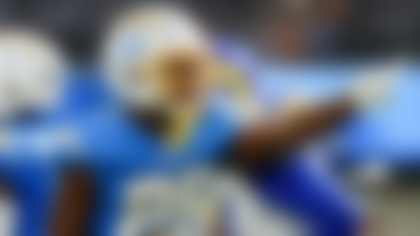In January, NFL teams begin the draft process by attending various all-star games, like the East-West Shrine Game and Senior Bowl. In February, it's all about the NFL Scouting Combine in Indianapolis. In March, attention turns to pro days at college campuses across the country.
Reuter: Biggest pro-day winners
Kendall Wright improved his draft stock at his pro day. And he wasn't alone. Chad Reuter provides pro-day winners. **More ...**
So what happens in April?
With the draft at the end of the month (April 26-28 in New York), teams now begin to tie everything together and finalize grades on the players. Here are the final steps in that process:
Draft meetings
Teams have different approaches to this. In my time with the Washington Redskins and Houston Texans, I believed in being inclusive, meaning I wanted the input of all of the scouts and coaches who saw the player. Each coach and scout who saw the player would read their report in the meeting. Then we would look at some tape of the player to give us a visual. At that point, I would give the player his grade. We used a grading system based on what round we felt we should draft him in -- a 1.5, for example, was a mid-first-round grade. If we had a major disagreement in the room on a player, we would look at more of the player's tape as a group until we reached a decision.
Brooks: Roller-coaster prospects
Draft evaluation is a fickle process. Just ask Dontari Poe. Bucky Brooks points out prospects who are giving scouts fits. **More ...**
Draft boards
We set four different draft boards. One had a ranking of players by position. A second board ranked players by their grade, regardless of position, from best player to the last player we gave a draftable grade. We would narrow this list down to about 100 players we were actually interested in. The final two draft boards were for players we would not draft. One was for players who had medical concerns, and the other listed players with off-field concerns.
Player visits
The NFL allows teams to bring in 30 players from out of town and an unlimited number from your city. Some of these visits are for top-rated players you want to spend more time with. At the combine, you only have 15 minutes to meet with a player privately. At the pro-day visit in March, it is impossible for all of the members of your staff to be there. So now, the whole organization has the ability to asses the player. You cannot work out the player unless he lives locally. One of our strategies was to have a young member of our scouting staff pick up the player at the airport. Many times, the player would be more candid with a young scout closer to his age. I always wanted to know what each prospect said to our scout.
Baldinger: Mock Draft
Brian Baldinger has a few surprises in his first-round projection, including Fletcher Cox getting taken within the top 10 picks. **More ...**
Physical exams
There are two parts to this process in April. First, there is the combine re-check physicals. This usually includes about 50 players who all the teams agreed to bring back for further review. There is also an individual physical teams execute at their facilities on players they want to check privately, or players who were not at the combine. Each year, there are several players who are not invited to the combine, but perform very well at their respective pro days. When teams bring those players in for a physical, they do not want it to become public information because it lets other teams know who is interested in a particular player. You have to report these to the NFL, but not to the media.
All four of the above items should be completed at least four days before the draft begins. Those last few days before the draft are best spent on draft-stategy sessions. I'll dig into that in a column later this month.
Follow Charley Casserly on Twitter @CharleyCasserly




